Choosing a design style for your home or workspace can be exciting but overwhelming. With so many options to choose from, two popular styles often stand out: industrial design vs rustic design. Both are unique, eye-catching, and can transform a space, but they have very different vibes.
In this blog, we’ll break down the key features of industrial and rustic design, compare their strengths and weaknesses, and help you decide which style works best for your space.
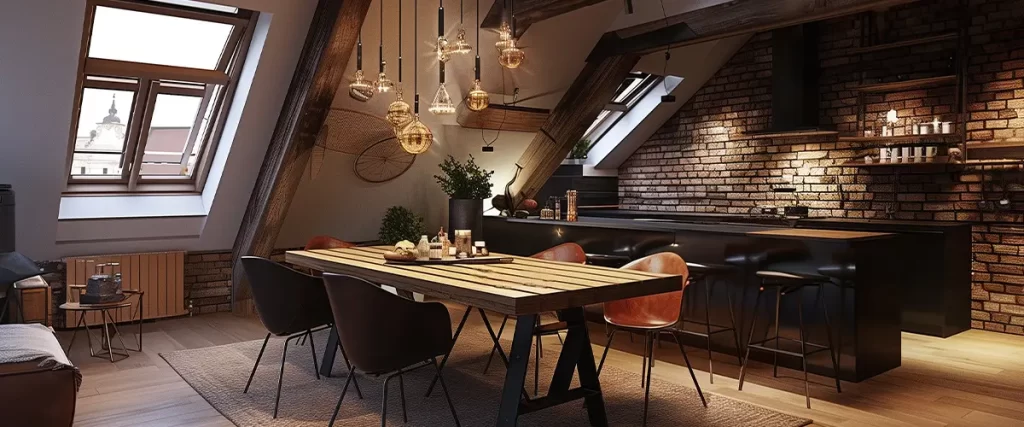
What Is Industrial Design?
Industrial design is inspired by old factories and warehouses. It embraces raw, unfinished elements, turning them into stylish features. Think exposed brick walls, steel beams, and concrete floors. Industrial design has a modern edge, with clean lines and a minimalist approach.
Key Features of Industrial Design:
- Raw Materials: Exposed metal, brick, concrete, and wood.
- Neutral Colors: Shades of gray, black, white, and browns dominate.
- Open Spaces: Often found in lofts or large, open areas with high ceilings.
- Functional Decor: Furniture and accessories often serve dual purposes.
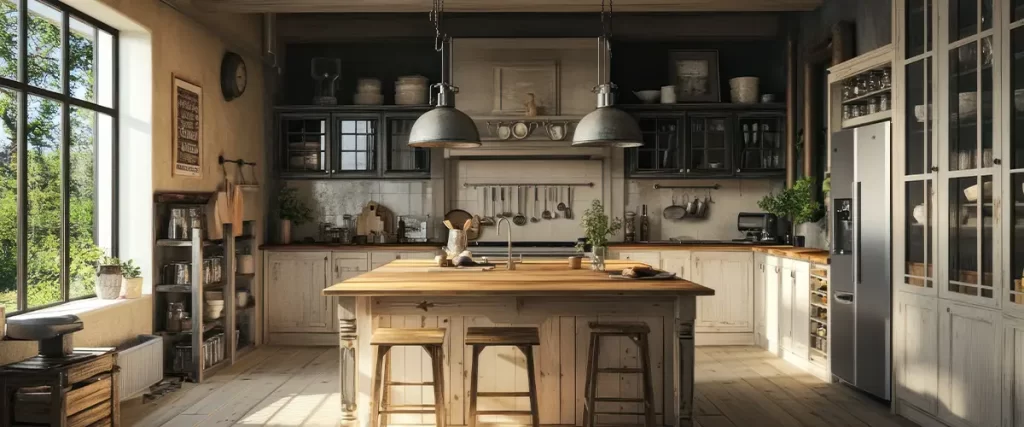
What Is Rustic Design?
Rustic design, on the other hand, is all about warmth and coziness. It takes inspiration from nature, using organic materials like wood and stone to create a homey, welcoming atmosphere. Rustic spaces often have a lived-in, slightly rugged charm.
Key Features of Rustic Design:
- Natural Materials: Wood, stone, and other organic elements are key.
- Warm Colors: Earthy tones like beige, brown, green, and warm reds.
- Textured Finishes: Rough-hewn wood, exposed beams, and natural stone are common.
- Comfort-First Approach: Furniture is soft, inviting, and practical.
Comparing Industrial and Rustic Design
Now that you know the basics, let’s compare these two popular styles in more detail.
1. Materials
- Industrial Design: Focuses on raw, man-made materials like metal, concrete, and steel. These materials give the space a bold and modern look.
- Rustic Design: Highlights natural materials like reclaimed wood, stone, and wicker. These elements create a warm and cozy vibe.
2. Color Palette
- Industrial Design: Uses cool, neutral tones like gray, black, and white, with occasional pops of bold color.
- Rustic Design: Stays in the warm, earthy range, with shades like brown, beige, cream, and muted greens.
3. Furniture
- Industrial Design: Furniture is sleek, functional, and often features metal or leather. It has a minimalist feel with clean lines.
- Rustic Design: Furniture is soft, inviting, and made from natural materials. Think big, comfy couches, wooden tables, and cozy textiles.
4. Lighting
- Industrial Design: Lighting often includes exposed bulbs, metal fixtures, and pendant lights. The goal is to keep things functional yet stylish.
- Rustic Design: Lighting is softer, with warm-toned bulbs and fixtures made of wood, wrought iron, or other natural materials.
5. Space and Layout
- Industrial Design: Works best in open spaces, like lofts or homes with high ceilings. The layout is minimal, focusing on functionality.
- Rustic Design: Fits well in smaller, cozier spaces but can be adapted for larger homes. The layout prioritizes comfort and a sense of togetherness.
Pros and Cons of Industrial Design
Pros:
- Modern and Stylish: Industrial spaces feel sleek and trendy.
- Low Maintenance: The raw, unfinished look means there’s less focus on perfection.
- Customizable: Works well with other styles, like modern or minimalist design.
Cons:
- Can Feel Cold: Without the right balance, industrial spaces may feel too stark or uninviting.
- Needs Space: Works best in open areas, so it’s not ideal for smaller homes.
- Material Costs: Elements like metal and concrete can be pricey.
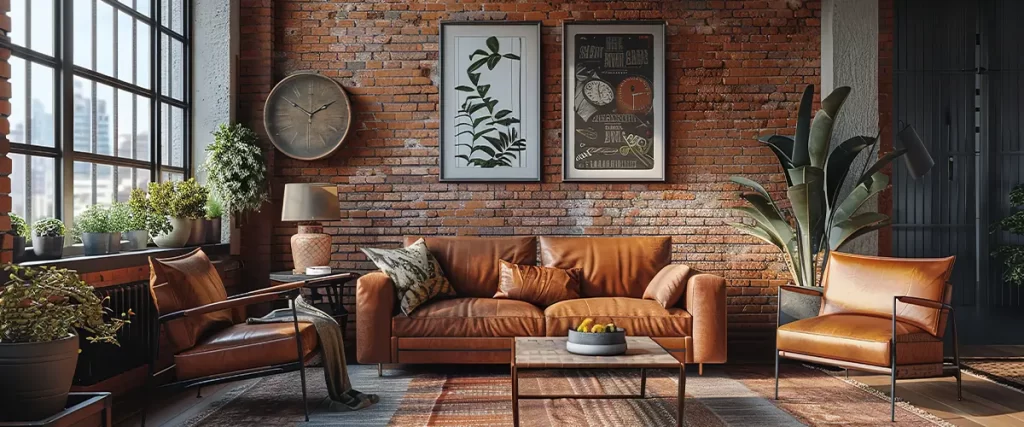
Pros and Cons of Rustic Design
Pros:
- Warm and Inviting: Rustic spaces are cozy and make people feel at home.
- Eco-Friendly: Often uses reclaimed or natural materials.
- Timeless Appeal: Rustic design never goes out of style.
Cons:
- Can Feel Cluttered: Without careful planning, rustic decor can make a space look too busy.
- Maintenance: Natural materials like wood may require more upkeep.
- Not as Modern: Some people find rustic design too traditional for their taste.
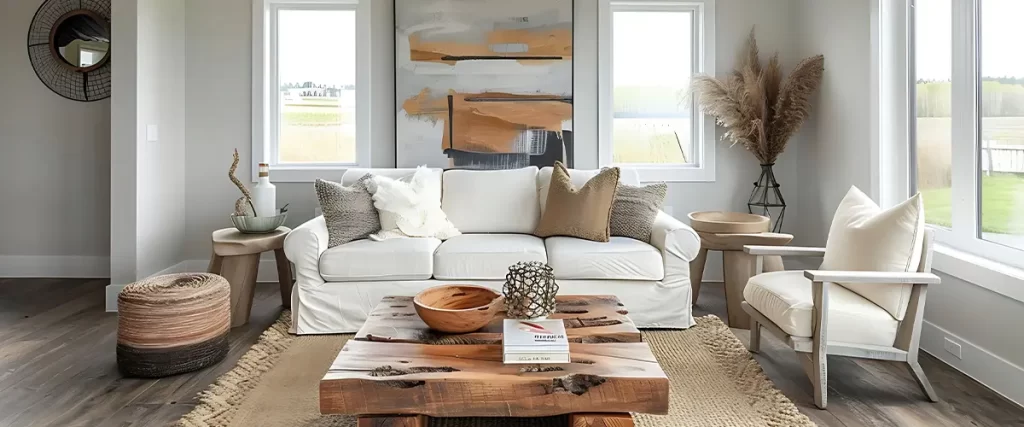
When to Choose Industrial Design
Industrial design is a great choice if:
- You love modern, edgy spaces.
- You have a large, open area to work with.
- You’re drawn to clean lines and raw materials.
When to Choose Rustic Design
Rustic design is ideal if:
- You want your space to feel warm and cozy.
- You love natural materials and earthy colors.
- You prefer a timeless, traditional look.
Blending Industrial and Rustic Design
Can’t decide between the two? The good news is, you don’t have to! Industrial and rustic styles can complement each other beautifully when done right. For example:
- Pair an industrial metal light fixture with a reclaimed wood table.
- Add soft, rustic textiles like woven rugs or throws to balance industrial furniture.
- Combine the clean lines of industrial decor with the warm textures of rustic materials.
How to Combine Industrial and Rustic Design
If you’re drawn to both styles, blending industrial and rustic elements can create a balanced, unique look. Here’s how to do it:
1. Start with a Neutral Base
- Use a neutral color palette as your foundation. Shades of gray, beige, and soft whites work well for both styles.
- Neutral walls and flooring provide a clean canvas, letting you mix and match furniture and decor without overwhelming the space.
2. Balance Materials
- Combine industrial elements like metal, steel, and concrete with rustic touches like reclaimed wood and natural stone.
- For example, pair a concrete coffee table with a cozy leather couch or add a wooden mantel to an exposed brick wall.
3. Add Textures
- Industrial design is sleek and smooth, while rustic design relies on warmth and texture. Bring the two together by adding soft rugs, woven baskets, or linen curtains to an industrial space.
- Conversely, introduce metal light fixtures or exposed pipes into a rustic room to add an industrial edge.
4. Use Furniture to Tie It Together
- Opt for furniture that incorporates both styles. For instance, a dining table with a metal frame and a wooden top or leather chairs with metal accents can seamlessly blend industrial and rustic elements.
- Don’t shy away from statement pieces, like a steel bed frame softened with chunky knit blankets and pillows.
Decorating Tips for Industrial and Rustic Spaces
If you’ve settled on one style—or a combination—these tips will help you nail the look:
For Industrial Design
- Keep It Minimal: Industrial design thrives on simplicity. Avoid clutter and choose functional pieces.
- Expose Structural Elements: Leave brick walls bare, show off ceiling beams, or highlight metal pipes.
- Opt for Industrial Lighting: Pendant lights with Edison bulbs or fixtures with exposed wiring are perfect for the industrial aesthetic.
For Rustic Design
- Go for Comfort: Plush couches, cozy throws, and oversized chairs make the space feel inviting.
- Layer Natural Elements: Add wooden furniture, stone accents, and plenty of plants.
- Use Warm Lighting: Lamps with warm-toned bulbs or candles create a cozy atmosphere.
For a Blend of Both
- Add industrial shelving with wooden planks for storage.
- Combine a rustic farmhouse table with sleek metal chairs.
- Incorporate rugs or throws to soften industrial furniture and create warmth.
Common Challenges and Solutions
Challenge 1: Too Cold or Too Warm
- Solution: If your industrial space feels too cold, add rustic accents like woven rugs or soft textiles. If your rustic space feels too warm, introduce cool tones like gray or black through industrial furniture or decor.
Challenge 2: Overcrowding
- Solution: Industrial and rustic designs can clash if there’s too much going on. Focus on a few statement pieces and keep the rest of the decor simple.
Challenge 3: Balancing Masculine and Feminine
- Solution: Industrial design can feel more masculine, while rustic design leans feminine. Balance the two by mixing sharp, angular pieces with softer, curved elements.
FAQs About Industrial and Rustic Design
Q: Can industrial and rustic styles work in small spaces?
A: Yes! In small spaces, focus on key elements from each style. For example, use industrial lighting and rustic furniture to create a balanced look without overwhelming the room.
Q: Is industrial design more expensive than rustic?
A: It depends on the materials. Industrial design often uses metal and concrete, which can be costly. Rustic design often relies on reclaimed wood, which can be affordable if sourced locally.
Q: Can I use bright colors in these styles?
A: Both styles favor neutral tones, but pops of color can work. Add warm reds or yellows for a rustic feel, or bold accents like blue or green to complement industrial decor.
Q: What kind of flooring works best for these styles?
A: Polished concrete or dark wood floors suit industrial design, while rustic spaces benefit from natural wood or stone. A combination, like concrete floors with rugs, works well for blending the two.
Q: How do I keep the space cohesive?
A: Stick to a consistent color palette and limit the number of materials. Focus on textures and finishes that complement each other.
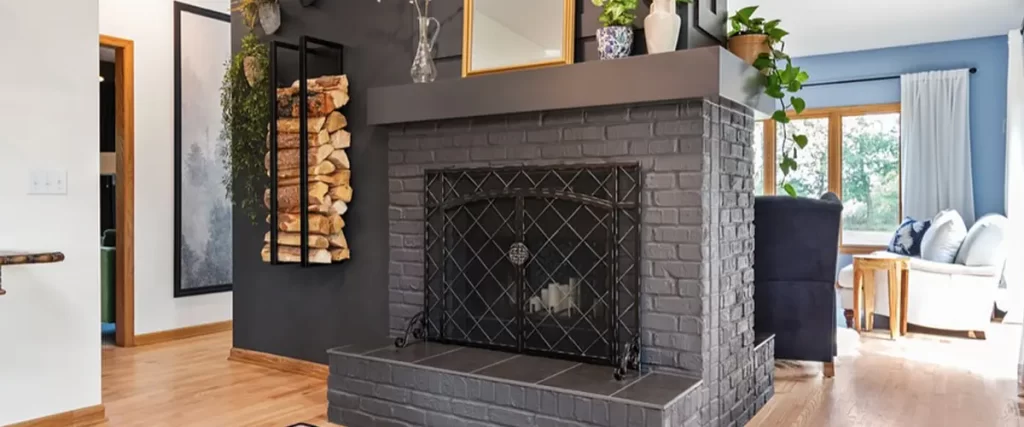
Choosing Between Industrial and Rustic Design
Industrial and rustic designs each bring something unique to the table.
- Choose Industrial Design if you love sleek, modern spaces with raw, edgy materials. It’s perfect for creating a minimalist, functional look.
- Choose Rustic Design if you want a warm, inviting space that feels cozy and connected to nature.
For those who can’t decide, blending the two styles allows you to enjoy the best of both worlds—a space that’s modern yet cozy, stylish yet inviting.
Bring Your Dream Space to Life with Tradecraft Design
Whether you’re drawn to the sleek appeal of industrial design, the warmth of rustic design, or a mix of both, Tradecraft Design can help bring your vision to life. Our team specializes in creating spaces that are stylish, functional, and tailored to your taste.
Contact Tradecraft Design today at (402) 378-9770 to schedule your consultation and start transforming your space into something truly unforgettable!
